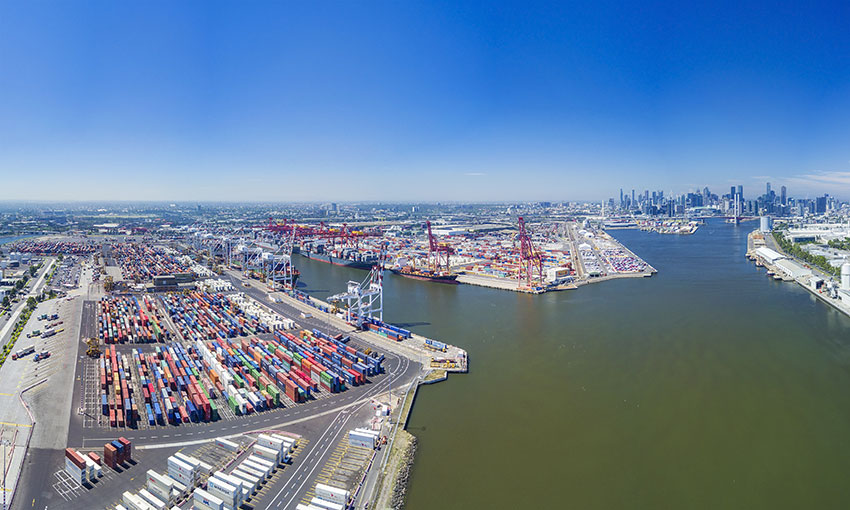THE container transport industry has welcomed Freight Victoria’s release of the first quarterly report into performance indicators for the container stevedore terminal/landside access interfaces in the Port of Melbourne.
The performance indicators have been published under Victoria’s Voluntary Performance Monitoring Framework, with the co-operation of the three stevedore terminals in Melbourne – DP World Australia West Swanson Terminal, Patrick East Swanson Terminal, and Victoria International Container Terminal at Webb Dock.
The data published in the first VPMF quarterly report aligns with data already available from other sources, however it de-aggregates the data from port level to the individual stevedore terminal level so that the performance of each terminal can be assessed.
Director of the Container Transport Alliance, Neil Chambers said, “CTAA and its member companies have been central to advocating for closer independent government scrutiny of the road and rail landside interface with the stevedore terminals in all capital city ports in Australia, including Melbourne”.
CTAA is an alliance of businesses engaged in the container transport logistics industry that account for the majority of containerised freight handled in capital city ports in Australia.
“In our view, significant increases in landside terminal access fees (infrastructure charges) levied by all stevedoring companies since mid-2017 haven’t been accompanied by an adequate analysis of landside productivity offsets,” Mr Chambers said.
“As to be expected, the first three months of data won’t give us solid trend lines. Even so, we can already see that the average TEU per truck movement, as well as the proportion of heavy vehicles that are able to ‘backload’ into and out of the terminals, are areas where we can work collaboratively across the container logistics chain to improve landside efficiencies.”
Mr Chambers said truck turnaround times will also be a strong focus, as will the trends related to vehicle booking system slots offered by the terminals (i.e. their capacity to service heavy vehicle movements across all time zones) and those taken up by the transport operators (demand for VBS slots).
“CTAA notes too that the Victorian government intends to develop subsequent monitoring stages, including for the empty container management chain, rail container freight performance, and freight transport network performance,” Mr Chambers said.
“We’ve urged the Victorian government to move quickly to monitor empty container management chain performance due to the significant constraints in empty container park truck arrival (gate-in) and overall operational capacity experienced at the height of the COVID-induced import surge in late 2020 and early 2021.”
Mr Chambers said the overall efficiency and cost effectiveness of a port’s container logistics chains are made or broken by how well they handle the management of empty containers.
“Poor empty container management capacity and operational performances can add significant unwanted costs into import and export supply chains,” he said.
“The VPMF initiative in Victoria now stands alongside the performance data collected by Transport for NSW to monitor container logistics performance at Port Botany in Sydney. We should be able to make some useful comparisons between the two major Australian capital city container ports over time.”
The CTAA is also pushing for comparable government-led independent performance monitoring in Queensland to report on the landside/terminal interfaces at the Port of Brisbane.

